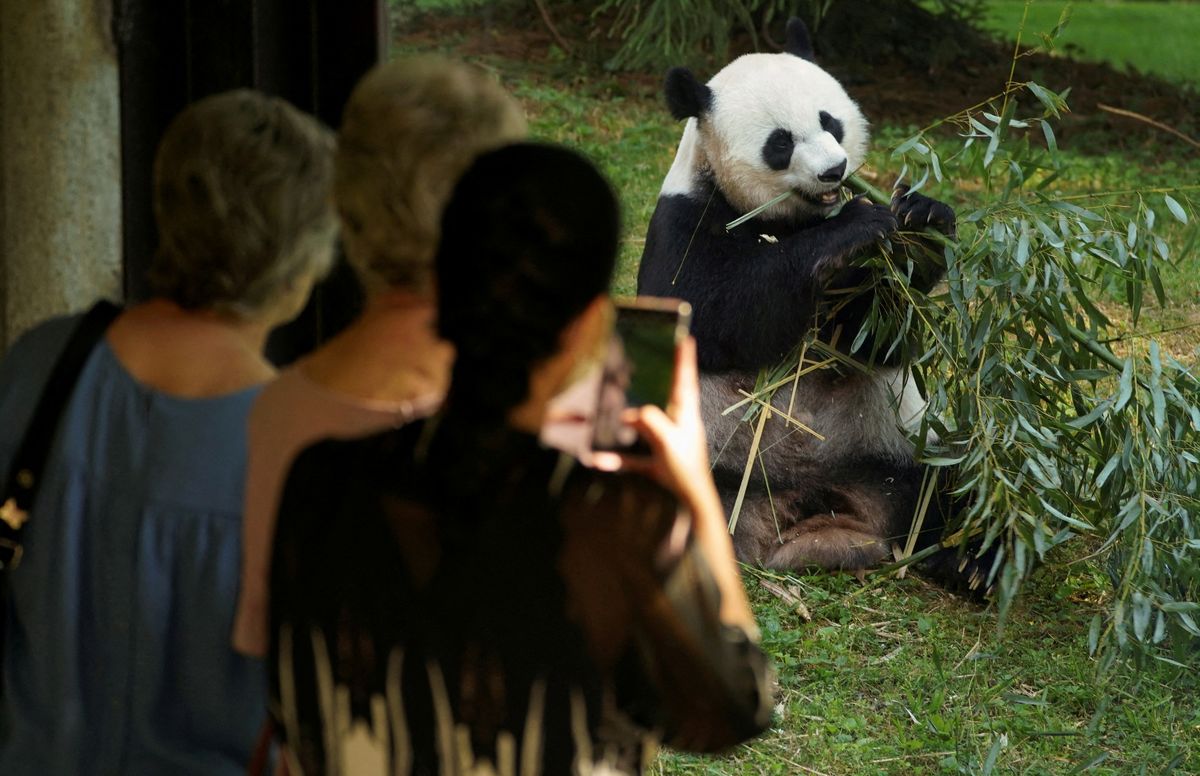Washington's iconic pandas will return to China
After over 50 years, Washington's pandas are heading back to China by the end of the year.

A few minutes every morning is all you need.
Stay up to date on the world's Headlines and Human Stories. It's fun, it's factual, it's fluff-free.
The backstory: In the mid-20th century, giant pandas became famous symbols of Chinese culture. But these fuzzy creatures were facing a tough time due to threats like habitat loss and poaching. In response, China took a groundbreaking step in the 1960s by establishing the world's first panda reserves. The country became known for its "panda diplomacy" by gifting pandas like Ling-Ling and Hsing-Hsing to the US as goodwill gestures. Through conservation and collaboration, the giant panda population showed signs of recovery and was reclassified from "endangered" to "vulnerable" in 2021.
But almost every panda in the world actually belongs to China. They are just “borrowed” by different countries for pretty huge sums of money, meant to go to panda conservation efforts. In Washington, DC, the National Zoo has three pandas living in a US$50 million exhibit called Asia Trail with a 24-hour panda-cam for panda enthusiasts. Other countries like Finland followed suit, renting pandas from China and making big yearly payments. Eighteen countries currently have pandas on loan from China.
More recently: In March, the Memphis Zoo faced controversy over mistreatment allegations and concerns about the health of its panda, Ya Ya. This was also following the death of its mate, Le Le, in February. The US and China stepped in and issued statements saying Ya Ya was in good health. But despite all that, Ya Ya packed up in April and headed back to China after living in Memphis for 20 years.
The development: After over 50 years, Washington's pandas are heading back to China by the end of the year because the three-year agreement with China's wildlife agency is ending. This shift goes beyond the US capital, with three other US zoos in Atlanta, San Diego and Memphis also sending their pandas back within the next year.
As for Washington's zoo, the future remains uncertain. It's unclear if this panda exodus will be permanent or if China has future diplomatic plans involving these beloved animals. But insiders familiar with the Biden administration said the US plans to discuss the panda situation with China soon, and China has also left the door open to more panda business in the future.
Key comments:
“There’s some significance to the fact that all of the pandas in the United States will be back in China by next year,” said Elena Songster, a professor at Saint Mary’s College of California and author of “Panda Nation,” a book about China’s panda policy. “They [China] have a plan. They know what they’re doing.”
“From the goodwill gestures of Nixon-era diplomacy, they’ve evolved into today’s emblems of discord,” said Lizzi C. Lee, a fellow at the Chinese Economy program at the Asia Society Policy Institute. “Pandas have become canvases for narratives of distrust and rivalry.”
“Many good results have been achieved on breeding, disease prevention and control, technical exchanges and public awareness,” said embassy spokesman Liu Pengyu. He said the two sides are “communicating on future collaboration on giant panda conservation and research.”




Comments ()